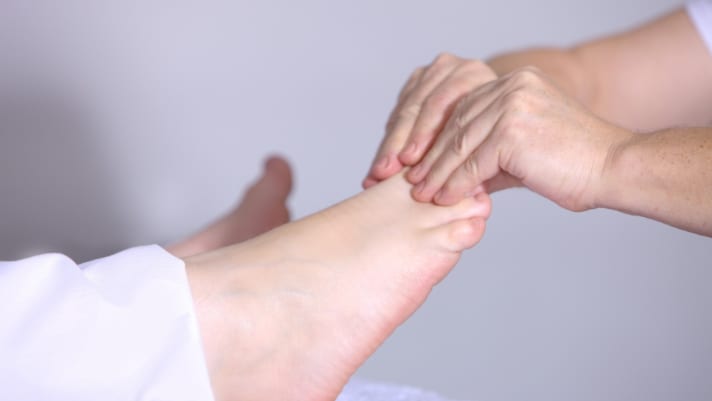
Bunion Causes, Treatment, And Prevention
The enlargement of the joint of the big toe causes bunions. The protrusion typically protrudes from the side of the big toe. When a bunion forms, it pushes the big toes against the other toes, which cause pain and discomfort. Hallux valgus is the name given to the abnormally positioned toe.
What Causes Bunions?
Bunions do not form instantly, they develop slowly over time. The main causes are injury or stress on the foot. The major contributors of bunions are wearing shoes that are too tight. Wearing tight shoes for a long period alters feet motion and exerts pressure on toes and the feet. Bunions can also occur because of neuromuscular problems such as cerebral palsy or inherited foot problems. Arthritis can also destroy the cartilage layer between the joints and lead to the formation of a bunion. Bunions can be treated using conservative means, but in some cases, they may require surgery .
Symptoms
Once the bump has formed, symptoms may include:
- Swelling around the joint of the big toe
- Stiffness and redness
- Corns develop where the big toe and the second toe overlap
- Soreness around the bunion
- Hammertoes
Diagnosis
A doctor can diagnose a bunion by merely looking at it. The bony protrusion is visible to the naked eye. However, to view the big toe joint and the bunion, an x-ray is necessary. An x-ray is important because it will help in directing the next stage of treatment.
Treatment
Treating a bunion is necessary when it causes foot pain. It is not necessary to perform foot surgery if the condition is not severe. There are many non-surgical treatment options available. However, if the bunion is causing feet problems, then surgery is necessary. There are several ways to deal with a painful bunion. They include :
- Remove the shoes and elevate your feet to ease the inflammation and pressure
- If the pain is extreme, you can use an ice pack. You should do this 15 – 20 minutes every day
- Use a steamed towel to relieve stiffness on the big toe joint
- You can reduce swelling by soaking your feet in cool water
- Do simple exercises like stretching your feet to avoid stiffness and improve feet’s flexibility
Medication
To relieve bunion pain, a doctor can prescribe using medications such as anti-inflammatory drugs like Advil. The doctor can also inject cortisone, which is a steroid into the bursa to ease inflammation. You can also use shoe inserts. They force the toes to stay in a natural position or pad the bunion from outside. You can also use toe pacers. You place them between the toes. They are supposed to ease the pressure between the big toe and the second toe while at the same time keeping the toes in their natural position.
Many feet problems come because people choose fashion over health. Women like to wear high-heeled shoes. High-heeled shoes increase the chances of getting a bunion. Therefore, women are likely to suffer from bunion compared to men. It is advisable to get your feet measured after every five years to avoid feet problems.
Physical Therapy
A podiatrist can refer a patient to a physical therapist whose specialty is treating feet problems. Physical therapists use ultrasound to relieve bunion pain and ease inflammation.
Surgery
When bunion pain is persistent, and it starts to affect your daily activities, then you should explore the surgery option with your doctor. The purpose of performing surgery is to eliminate the pain and correct the bone deformity. The type of surgery depends on the severity of the bunion, activity level, and age. The surgical procedures available include :
- Bone realignment (osteotomy)
- Joint fusion (arthrodesis)
- Removing impaired joint (resectional arthroplasty)
- Removing the bunion protrusion (exostectomy)
Prevention
A forming bunion can be slowed and in some cases stopped. Using orthotics or customized shoes which help slow or stop bunion development. Physical therapy is also instrumental in preventing the development of a bunion. You should also avoid athletic activity while wearing improper footwear. You should see a podiatrist once you suspect the bunion is developing.